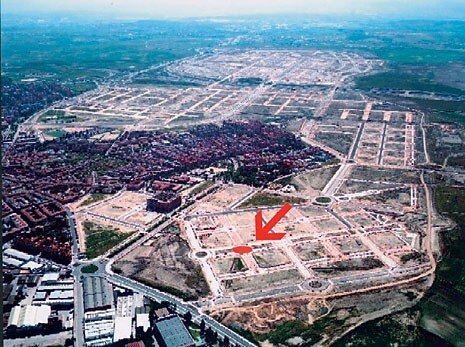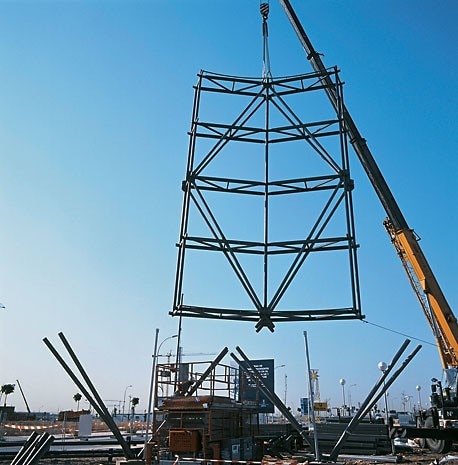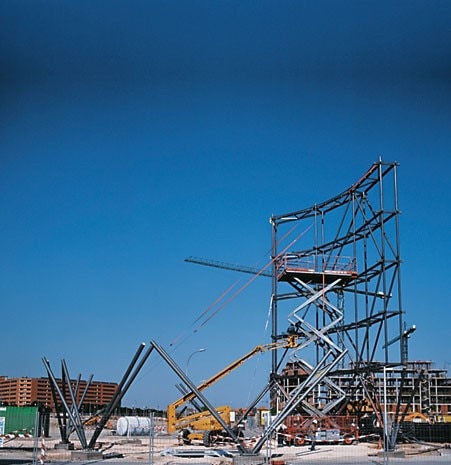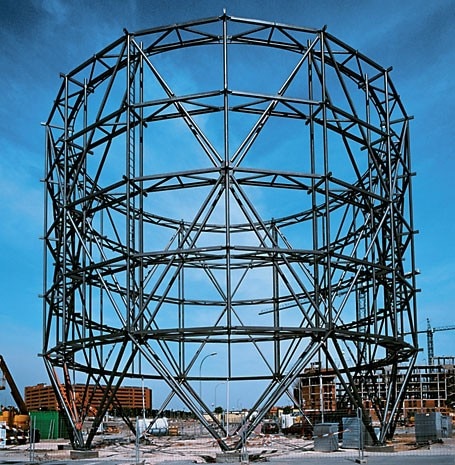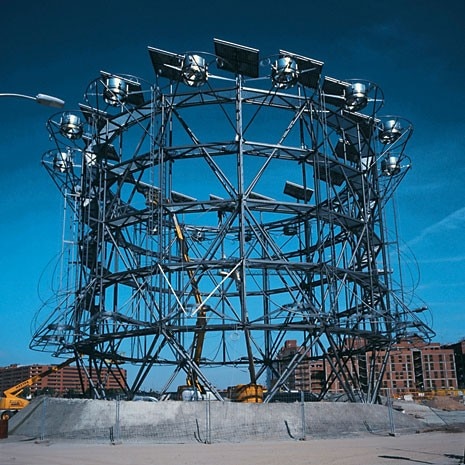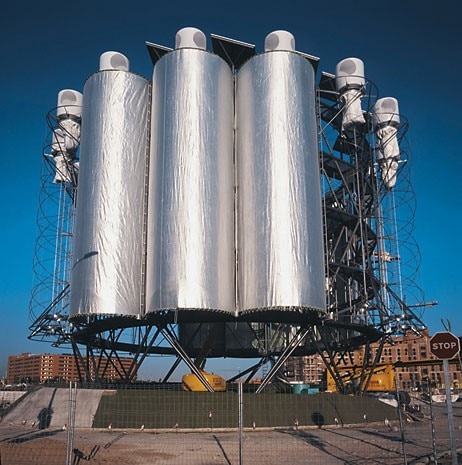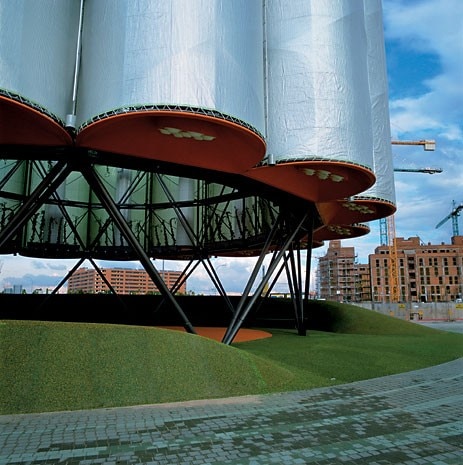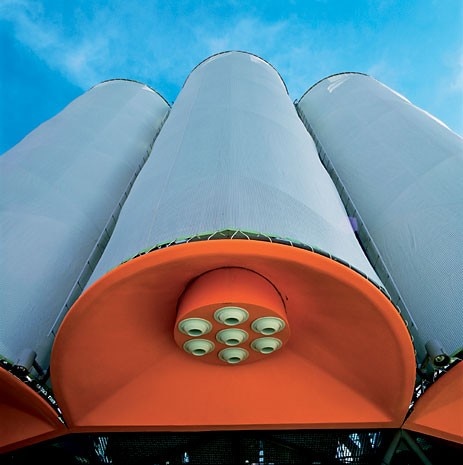The architects resorted to urgent action with the aim of creating a sort of linear wood at the centre of the boulevard – a green belt of compact vegetation to be grown in the next 15 to 20 years. In the middle of a young tree plantation along the boulevard, they placed three mock gasworks. These constructions will act as focal points for the social life of the new urban settlement, which to date has no public meeting places. At the base of the three so-called “air trees”, each with a diameter of about 20 metres, a slight hollow will accommodate the normal activities of an urban park. The fronts of the enormous cylinders are differentiated. In the case of the air tree already erected as a pilot-element, the outer facade is formed by columns of air while the interior is clad with vegetation.
Another of the cylinders will be covered by vegetation both inside and out. The third will have a green wall facing towards the city and a video projection wall on its internal surface: like a theatre, it will have seating at its base and will be covered by a canvas with a screen-printed tree. The first air tree is the result of 16 hemicycles arranged in a circle, covered with a thermal fabric and supported by a lightweight, easily assembled frame, which is identical for the three large “dynamos”. In terms of energy these theatrical scaffoldings are self-sufficient, relying on a system of photovoltaic solar collection.
An evaporation and transpiration plant has been devised for the air conditioning of these open spaces, which are situated in a zone that suffers from very high temperatures in summer. Water pumped into tanks at the top of the cylinders will be redistributed in the lower layers, where it will be vaporised. This will lower temperatures by eight to ten degrees in the small circular spaces, thus making them very pleasant places in which to relax. (R.C.)
The firm [ecosistema urbano] was founded in 2000 in Madrid by Belinda Tato, José Luís Vallejo, Diego Garcí-Setién and Costantino Hurtado. At present they are working on the Europan 8 project (Maribor, first prize), the National Meteorological Museum building in Madrid’s Buen Retiro park, an office building in the Canary Islands, and a joint participation in the project for 22,000 homes near Madrid, promoted by a private corporation.

